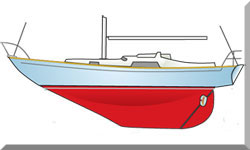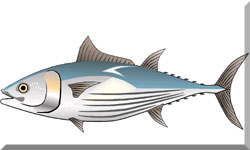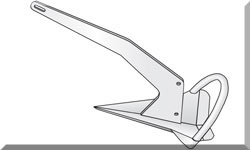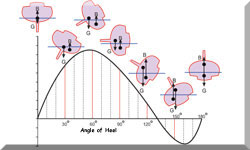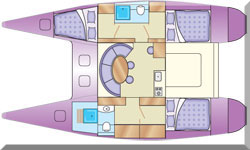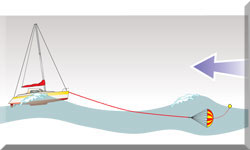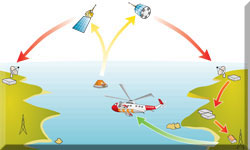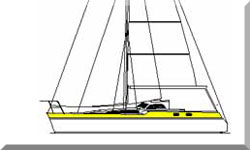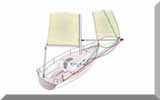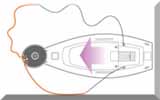- Home
- Buying a Used Sailboat
- Sailboat Condition Survey Checklist
The Sailboat Condition Survey Checklist: Your Blueprint for a Smart Purchase
In a Nutshell...
Before you hand over any money, a meticulous sailboat condition survey checklist is your most important tool. It helps you systematically inspect every component, from the hull and rigging to the engine and electronics, so you don't miss any red flags. A thorough self-survey, combined with a professional's expertise, can save you from buying a vessel with hidden problems and turn a stressful purchase into a confident investment.
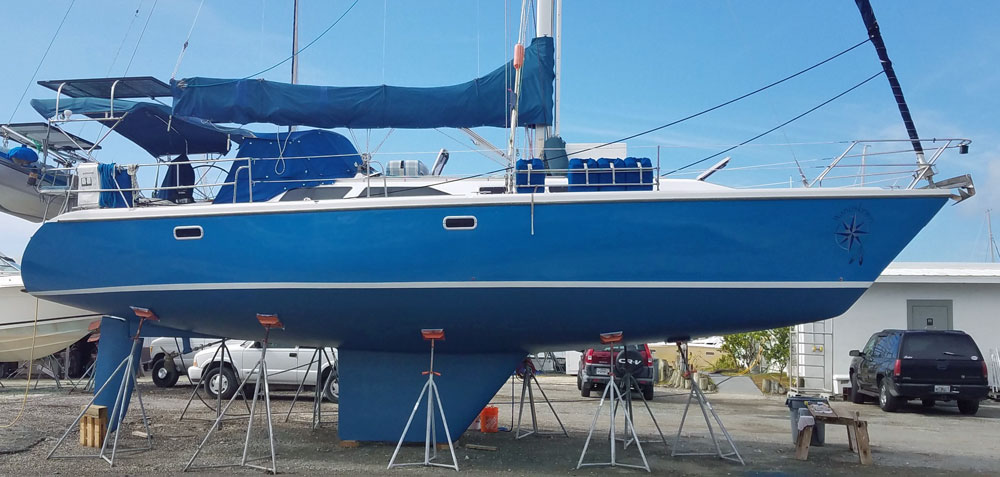 This one looks worthy of a deeper inspection...
This one looks worthy of a deeper inspection...Table of Contents
- A Meticulous Approach to Buying Your Next Vessel
- Hull & Structural Integrity
- Deck, Superstructure & Interior Structure
- Rigging & Sails
- Engine & Mechanical Systems
- Electrical & Instrumentation Systems
- Plumbing & Freshwater Systems
- Safety Equipment & Accessories
- Documentation & History
- Sea Trial & Performance Testing
- The Brokerage Process & Professional Surveys
- Verifying Identity & Ownership
- The True Cost of Ownership
- Your Post-Purchase Action Plan
- Inspection Summary Table
- Summing Up
- Frequently Asked Questions
A Meticulous Approach to Buying Your Next Vessel
Buying a used sailboat can be a fantastic way to get on the water, but it's a purchase that requires a level head and a keen eye. As an experienced ocean sailor, I've seen it all—from meticulously maintained vessels to those with hidden issues just waiting to surface offshore. A professional marine survey is an essential part of the process, but before you get to that stage, a detailed self-survey is a must. It allows you to quickly assess a boat's general condition and decide whether it's even worth the cost of a full survey.
This comprehensive checklist is designed to guide you through a thorough initial inspection. Think of it as your blueprint for a smart purchase, ensuring you don't overlook any critical areas.
1. Hull & Structural Integrity
The hull is the foundation of the boat, and its condition is non-negotiable. It's what keeps the water on the outside. When a boat is out of the water, this is your chance to look at it closely.
Hull Material & Construction:Fibreglass: Look for signs of osmosis, which appears as small blisters on the surface. While a few can be normal, a widespread outbreak can signal a costly repair job. Also, inspect for cracks, especially around through-hulls and keel attachments.
- Wood: Look for soft spots, particularly around chainplates, bulkheads, and deck fittings. This can be a sign of rot. Check for borer worm damage and the overall condition of the seams.
- Steel/Aluminium: Rust is the enemy of steel. Look for pitting, especially in the bilges and around the keel. For aluminium, corrosion can manifest as a white, powdery substance.
Gelcoat & Fairing: The gelcoat is the boat's first line of defence. Check for chipping, crazing (a spiderweb of small cracks), and discoloration.
Bulkheads & Structural Supports: The bulkheads are vital for a boat's rigidity. Tap them with a plastic mallet or a knuckle to listen for a solid sound. A hollow thud could indicate water intrusion or delamination. Also, inspect internal frames and stringers for signs of stress or fatigue.
Keel, Rudder & Transom: The keel takes an immense load. Check for signs of impact damage from grounding. The rudder should feel solid when wiggled and turn smoothly. The rudder stock and bearings should also be free from excessive play.
2. Deck, Superstructure & Interior Structure
A boat's deck and interior are where you'll spend most of your time, so their condition is critical for both comfort and safety.
- Deck & Companionway: Walk every inch of the deck. Listen for a crunchy or soft feel, which suggests delamination and water intrusion into the core material. Also, inspect all deck fittings, such as cleats, winches, hatches, and the companionway, for secure mounting.
- Railings & Handholds: Your safety can depend on these. Give the stanchions a good tug to ensure they're securely bolted and check all metal components for signs of corrosion.
- Internal Supports & Bulkheads: Inspect all interior bulkheads for signs of leaks or mould, especially around portlights and deck fittings. This is a tell-tale sign of a leaky deck.
3. Rigging & Sails
The rigging and sails are represent the driving force of the sailboat. A failure here could be catastrophic at sea.
- Standing Rigging: This is the steel wire that holds the mast up. Look for broken strands, especially near swage fittings. Check all turnbuckles for corrosion and ensure the mast is straight and properly raked.
- Running Rigging: These are the lines you use to hoist and control the sails. Look for chafe, discolouration from UV damage, and general wear.
- Sails: A new set of sails can cost a fortune, so this is a key area. Inspect them for repairs, seam integrity, and UV damage along the leach and foot. Check battens, grommets, and other fittings for secure attachment and rust.
- Mast & Boom: Look along the length of the mast for any bends or dents. A common issue on older boats is a leaky mast boot, which lets water seep down into the bilge.
4. Engine & Mechanical Systems
When to wind decides not to cooperate, even the most beautiful sailboat is just a floating platform without a reliable power plant.
- Engine Condition: The engine is the heart of the boat. Check the engine hours and review any maintenance records. Look for oil or fluid leaks and assess the condition of engine mounts. A simple test: does the engine start easily?
- Ancillary Systems: The exhaust system is a critical, but often overlooked, safety feature. Inspect for proper venting and leaks. Also, check fuel lines and filters for signs of degradation.
- Bilge & Pumping Systems: A bilge that is consistently wet or has a film of oil on the surface is a major red flag. Test all bilge pumps (manual and electric) to ensure they work.
5. Electrical & Instrumentation Systems
In today's sailing world, reliable electronics are vital for navigation and safety.
- Battery & Charging Systems: Check the batteries for signs of corrosion on the terminals. Ensure the charging system (alternator, solar panels) is working properly.
- Wiring & Distribution: This can be a minefield on older boats. Look for neatly bundled wires and inspect circuit breakers and fuses for signs of wear or heat damage.
- Navigation & Electronics: Test all electronics, including the GPS, AIS, radar, and VHF radio. A quick check of the autopilot and depth sounder is also essential.
6. Plumbing & Freshwater Systems
This is often a smelly, overlooked area, but it's vital for a comfortable cruising life.
- Water Tanks & Pumps: Look for leaks around the freshwater tanks and ensure the pumps are working correctly.
- Plumbing Components: Inspect all hoses and connections for signs of wear and corrosion. A burst hose could quickly flood a boat's interior.
- Sanitation Systems: A working head (toilet) and holding tank are non-negotiable. Flush the head and check for leaks.
7. Safety Equipment & Accessories
Your life could depend on this gear.
- Personal Safety Gear: This includes life jackets and safety harnesses. Check that they are in good condition and not expired.
- Emergency Equipment: Check the expiry dates on flares, fire extinguishers, and the EPIRB. This is one area where you can't cut corners.
- Anchoring & Mooring Gear: The anchor is your boat's handbrake. Ensure the anchor, chain, and windlass are in good condition.
8. Documentation & History
A boat's paperwork tells a story. A well-documented history is a sign of a conscientious owner. For a more comprehensive overview of the entire purchasing process, you may find our guide, "Buying a Used Sailboat: Your Guide to Finding the Perfect Vessel," an invaluable resource.
- Maintenance Records: Request and review service records, pre-purchase survey reports, and any modification history. A complete set of records suggests a boat that has been well-maintained.
- Ownership & Insurance: Verify that all registration, title, and insurance documents are in order.
- Prior Repairs & Upgrades: Note any significant repairs or modifications, confirming they were carried out professionally.
9. Sea Trial & Performance Testing
This is where the boat comes to life. Don't skip this step.
- Engine & Mechanical: Run the engine to check for smooth acceleration, proper idling, and unusual noises or vibrations.
- Rigging & Sails: Test sail handling under load and verify that the boat tracks straight during manoeuvres.
- Steering & Handling: Assess the responsiveness of the rudder and steering system under different conditions.
- Onboard Systems: Test electrical systems, navigation equipment, and onboard pumps while underway.
10. The Brokerage Process & Professional Surveys
Most used sailboats are bought and sold through a yacht broker. Understanding their role is a vital part of the process. While a broker's primary duty is to the seller, a good one can be an invaluable source of information and a key liaison for arranging viewings, sea trials, and paperwork. They should hold all funds in a secure client account, which protects your deposit.
A professional marine survey is the most important step in the buying process. A professional surveyor, who should be a member of a recognised body like the Yacht Designers & Surveyors Association (YDSA) in the UK or the National Association of Marine Surveyors (NAMS) in the US, provides an objective, detailed report on the boat’s condition. They'll use specialised equipment, such as moisture meters, to detect problems you can't see. The results of the survey can be a powerful tool for negotiating the final price or, if serious issues are found, walking away from the deal entirely.
11. Verifying Identity & Ownership
Just like a car, a sailboat has a unique identifier called a Hull Identification Number (HIN). The HIN is typically a 12-character code permanently moulded or engraved into the hull, usually on the starboard side of the transom. It contains a wealth of information, including the manufacturer, serial number, and year of construction. Cross-referencing the HIN with the boat’s title and registration documents is a critical step to ensure you are buying from the legal owner and that the vessel has a clear history. This simple check can prevent you from falling victim to fraud.
12. The True Cost of Ownership
The purchase price is just the beginning. It's crucial to budget for the ongoing costs of owning a sailboat. These expenses can easily amount to 5-10% of the boat’s value annually. Here’s a breakdown of what to expect:
- Mooring/Berth Fees: This is often the largest single annual cost, varying significantly based on location and facilities.
- Insurance: A non-negotiable expense that protects your investment. Policies can be tailored to your cruising needs, but expect to pay around 0.5-1% of the boat's value per annum.
- Annual Maintenance: This includes a yearly haul-out for antifouling and anode replacement, as well as routine engine servicing.
- Repairs & Upgrades: Just like a house, things break. From replacing a worn-out sail to upgrading an older piece of electronics, these costs can add up quickly.
But this is just the tip of a substantial iceberg—here's the rest of the story...
13. Your Post-Purchase Action Plan
Once the paperwork is signed and the money has changed hands, you're the proud new owner! But your work isn't quite done. Here are a few key tasks to complete:
- Transfer of Title & Registration: Make sure all legal documents are transferred into your name immediately.
- Insurance: Get your new insurance policy in place, as most marinas won’t allow you to keep the boat without it.
- Initial Maintenance: Schedule a haul-out for a fresh coat of antifouling and a complete engine service if you haven't already.
Inspection Summary Table
| Component | Key Inspection Points | Notes & Actions |
|---|---|---|
| Hull & Structure | Cracks, blisters, delamination, rot | Use a bright light and a plastic mallet for tapping. |
| Deck & Superstructure | Fittings, water infiltration, secure attachments | Walk every inch of the deck to check for soft spots. |
| Rigging & Sails | Corrosion, wear, tear, repairs, tension | Test rigging under load during the sea trial. |
| Engine & Mechanics | Fluid leaks, engine hours, exhaust integrity, bilge drainage | Conduct a test run from cold to check for issues. |
| Electrical Systems | Battery condition, wiring, instrument functionality | Verify calibration and operability of all systems. |
| Plumbing | Leak checks, water pump operation, tank condition | Look for signs of corrosion or algae build-up. |
| Safety Equipment | Life jackets, flares, EPIRB, fire extinguishers | Always note and verify expiration dates. |
| Documentation | Service history, modifications, ownership records | Cross-check all paperwork with the physical inspection. |
Summing Up
While this sailboat condition survey checklist may seem daunting, it's a small investment of time that can prevent a significant financial mistake. The goal is to be methodical and objective. This initial inspection will help you identify the best candidates and, crucially, rule out the problematic ones, ensuring that your journey to finding the perfect sailboat is a smooth and successful one.
This article was written by Dick McClary, RYA Yachtmaster and author of the RYA publications 'Offshore Sailing' and 'Fishing Afloat', member of The Yachting Journalists Association (YJA), and erstwhile member of the Ocean Cruising Club (OCC).
Frequently Asked Questions
Q: Do I still need a professional survey if I use this checklist?
Q: Do I still need a professional survey if I use this checklist?
A: Absolutely. This checklist is a guide for your initial inspection. A professional marine surveyor has the specialised tools, experience, and certifications to conduct a far more detailed examination of the vessel's structure, systems, and overall condition.
Q: What is osmosis and is it a dealbreaker?
Q: What is osmosis and is it a dealbreaker?
A: Osmosis is the formation of blisters on a fibreglass hull due to water absorption. A few isolated blisters may be fixable, but a widespread problem can require an expensive, professional repair.
Q: How can I check for rot on a wooden boat?
Q: How can I check for rot on a wooden boat?
A: Use a small, blunt tool like a marlinspike or a plastic mallet to gently probe for soft spots, especially around fasteners and joins. A healthy wooden hull will feel solid, while a rotted section will give way easily.
Q: What is the most common issue on older sailboats?
Q: What is the most common issue on older sailboats?
A: In my experience, the most common issues on older boats relate to the rigging and electrical systems. Rigging can suffer from corrosion and fatigue, while electrical systems can be a mess of outdated wiring and poor connections.
Q: How do I know if the engine is in good condition?
Q: How do I know if the engine is in good condition?
A: A healthy engine should start easily, run smoothly without excessive smoke or noise, and maintain proper temperature and oil pressure. Check the exhaust for signs of excessive soot or steam.
Q: Is the Hull Identification Number (HIN) a legal requirement?
Q: Is the Hull Identification Number (HIN) a legal requirement?
A: Yes, in most countries, all boats manufactured after a certain date (e.g., 1972 in the US) are legally required to have a unique HIN. It is a federal crime to alter or remove it.
Recent Articles
-
Modern Boat Electronics and the Latest Marine Instruments
Dec 20, 25 05:27 PM
Should sailboat instruments be linked to the latest boat electronics as a fully integrated system, or is it best to leave them as independent units? -
Hans Christian 43: Classic Bluewater Cruiser & Liveaboard Sailboat
Dec 10, 25 04:37 AM
Explore the Hans Christian 43: a legendary heavy-displacement, long-keel sailboat. Read our in-depth review of its specs, design ratios, and suitability for offshore cruising and living aboard. -
Planning Your Sailboat Liveaboard Lifestyle: An Ocean Sailor's Guide
Dec 06, 25 05:18 AM
Seasoned sailors share their methodical risk analysis for planning a secure Sailboat Liveaboard Lifestyle, covering financial, property, and relationship risks.


